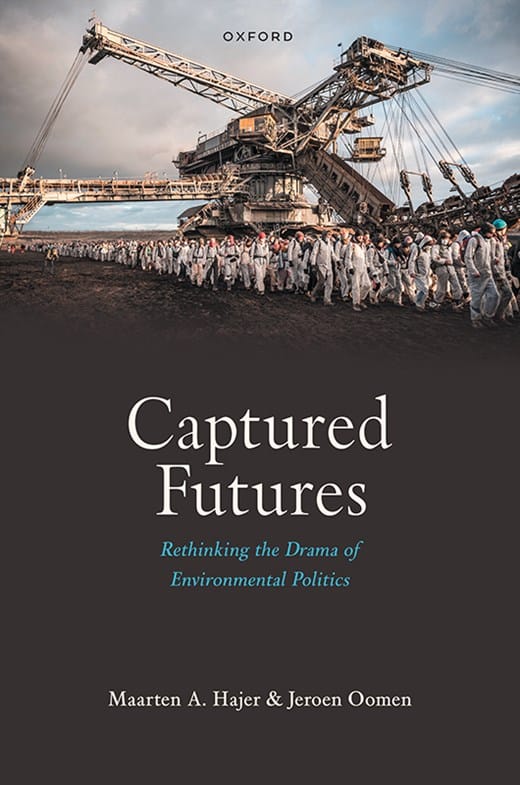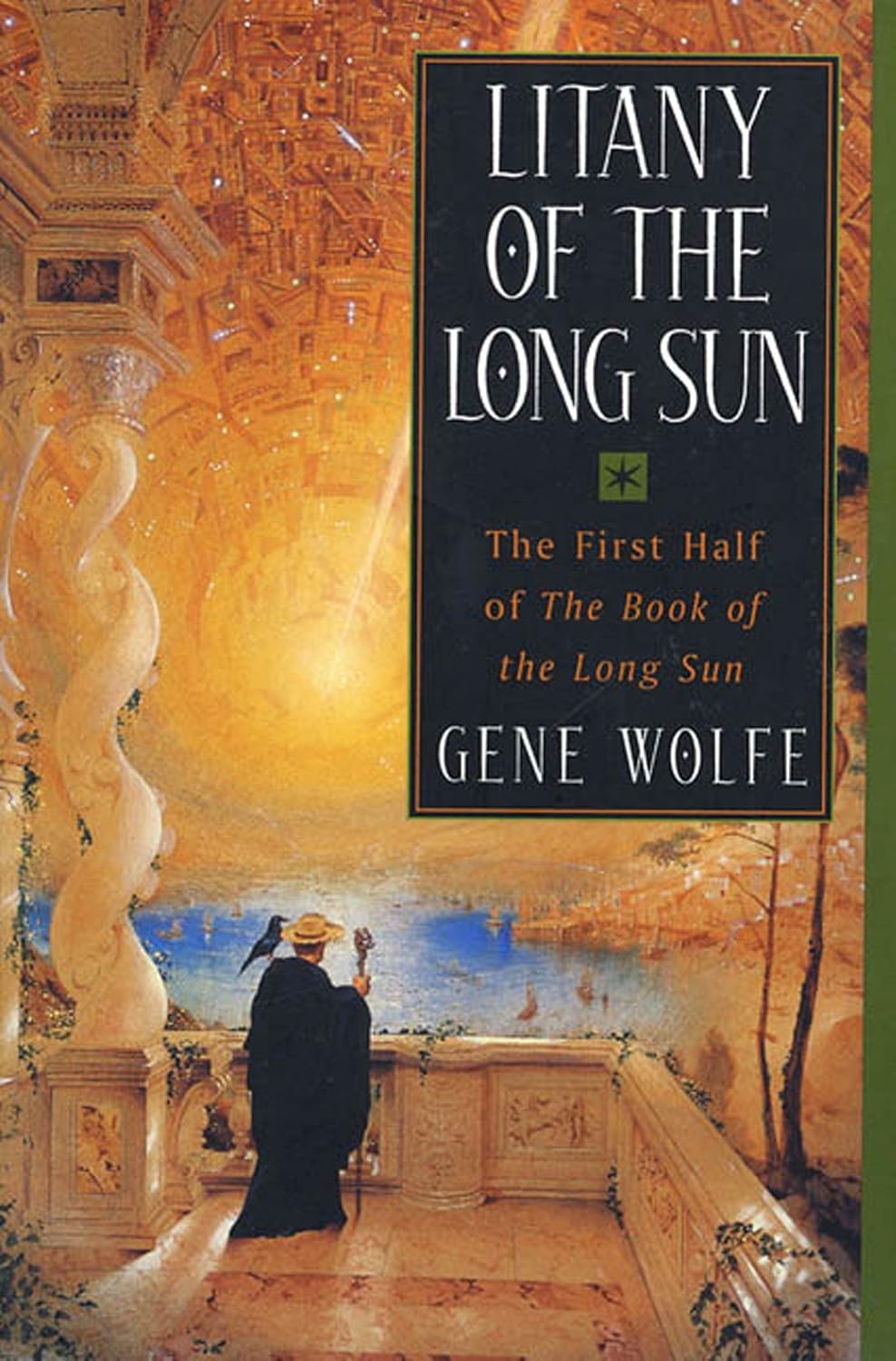week 33 / 2025: how much is too much?
Or, phrased differently: what do the IPCC's climate change scenarios have in common with the Star Wars franchise?

“Stuttering, cold and damp / steal the warm wind, tired friend / times are gone for honest men, sometimes / far too long for snakes…”
This week, I’ve found myself taking the first steps toward what I might decide to call (with my tongue at least partly in cheek) a Quantity Theory of Worldbuilding.
Any plausible realisation of said theory is a long way off yet, but—with zero apologies for the promulgation of the cliché—the journey matters more than the destination. So, won't you join me?
I find there’s much to appreciate in this piece by the author Lincoln Michel, who has written impactfully on worldbuilding from the literary-artistic side of the fence (as distinct from the more futures-artificial side that I’m writing from here). Michel is a little worried about what I’m going to call an emergent “one-wayism” in fannish and author-aspirant circles of discourse, in which a very particular take on how worldbuilding should be done is becoming something close to a religious dogma.
My suspicion is that this phenomenon—whose existence I find all too plausible—say a lot more about fan discourses than it does about worldbuilding. That aside, Michel argues for variety as the soul of art, and I am in broad agreement with him on that point (even if though seems that the world of sf/f publishing is, uh, rather less so.) For my part, I’m less concerned with how the extremely online clicktivists of Brandon Sanderson fan-tumblrs conceptualise worldbuilding than I am with the mainstreaming of the concept, and its concomitant appropriation as a consultancy gimmick.
This may seem a somewhat ironic concern, coming from a consultant who badges his practice as being rooted in worldbuilding! But I would counter that I can give you chapter and verse on what worldbuilding actually is, how it works and why it matters. (Indeed, I have already done so!) Compare that to the handwavium of a brand-marketeer, who has decided that Jeff Vandermeer’s Southern Reach trilogy has helpful lessons for someone trying to flog sweat-shopped sneakers or premium lifestyle computing products, but who can’t really tell you what those lessons are, other than some vague guff about embracing tensions between popularity and countercultural appeal.
But even here there is space for methodological variety: the question of how to worldbuild is less an issue for me than the (admittedly related) question of how much, which—on the futures side of the fence—has implications that go beyond the preferences of the most vocal elements of your audience. On the literary side, more worldbuilding results in an increasingly determined, internally consistent and self-referential fabula and, as Michel notes, this is actually a big part of its appeal for a certain sort of fan; our marketeer linked above notes that Taylor Swift achieves a similar effect, albeit by rather different means in a very different medium. The result are worlds that audiences inhabit, in a very real sense, and it’s this capture that makes worldbuilding an appealing commercial prospect.
However, that depth can be off-putting, as can its policing by a highly invested fandom. Michel discusses the magic of the first few Star Wars movies, in which the passing mention of otherwise unexplained factions, locations and historical events were used to give a sense of depth and breadth to the setting of a very pulpy hero’s-journey plot. In that context, “the Clone Wars” were an like a door passed quickly as one made one’s way along the corridor of the story: it implied a whole other room, or perhaps even a wing, to the imagined mansion. But as Michel observes, in the franchise model of worldbuilding—which Star Wars arguably pioneered—an unopened door is money unmade. And so the franchise gratifies its fans, and in doing so engenders an expectation of further gratification among said fans… all of which, to be clear, is evidently a pretty lucrative business model, and very appealing to a certain segment of the audience.
Now, Star Wars is fiction—or, perhaps more accurately, Star Wars is transmedia storytelling. We could have an interesting discussion about the extent to which any given work in that sprawling franchise is or isn’t true art, but for now let’s treat it in good faith and assume that art is the intention. As I said a few weeks ago, futures work is different: here, the intention is artifice, because you’re aiming to represent a specific set of ideas and/or normative projections. There’s also a difference of scale: with the exception of, say, the IPCC reports on climate change, it’s unusual for any given future or suite of futures to be worked on and expanded for years, and promulgated through an ever-growing body of media.
Now I come to think of it, though, that’s actually a very illuminating comparison. The IPCC futures might quite usefully be thought of as a successful transmedia franchise: widely known, but largely impenetrable to any but its most hardcore devotees, whose preferences—epistemological and economic—shape both the media and style of the works produced and the philosophy expressed thereby.

(For the record, I greatly admire the people involved in producing the IPCC reports, and the scientific expertise which makes it possible. However, I also understand it as a captive element of a larger system, to whose autopoiesis it is unknowingly in thrall. Or, to put it another way: you should really read Hajer and Oomen’s Captured Futures.)
Nonetheless, and again: it is very much the exception for any one future (or even one suite of futures) to be explored to the extent of the Star Wars universe or the IPCC scenarios. But the question of how much in worldbuilding is not a question of absolute quantity, but rather of relative quantity: it’s about how many of those doors in corridors are passed by, and how many are opened and explored.
In other words, and to return to the way I phrased it in the Magrathea Protocol: it’s a question of how open or closed that imagined world is allowed to be, and I would argue—perhaps counterintuitively—that more open doors result in a more closed world.
But I would also argue that, in futures work at least, you don’t want a fully open world any more than you want a fully closed one. However, given it’s taken me around a thousand words to reach that claim, I think I’ll save the unpacking of it for next week…
reading
I decided to extend my Gene Wolfe jag, and to get stuck in to his later quartet, known as The Book of the Long Sun. As with the earlier sequence of books—and indeed with all of Wolfe’s writing, even his lapidary short stories—theological and moral questions are never far away, but this time the setting is some sort of artificial space habitat, albeit one whose denizens seem mostly to have forgotten that fact. More accurately, perhaps, those denizens simply accept the habitat as their world (or their whorl, as Wolfe’s wordplay would have it); they do not question the way in which they can see the other side of their world in the skies above them at night, any more than most of us question the sun rising in the east and setting in the west, or the existence of those cardinal directions.

As with the New Sun, our protagonist is an earnest but somewhat naive seeker after truth, given a mission from god (or perhaps gods) by a revelation experienced in the midst of a ball-game he’s playing with the kids from the poor-quarter seminary of which he’s the priest, or “augur”. Likewise, a significant part of the pleasure of both books is your decoding the world that Wolfe has built for you to explore; Wolfe was a great master of showing-not-telling.
I do find myself wondering, though, whether the intertextual experience and reading protocols that made these novels such a pinnacle of the genre in their time will survive long enough for them to be of interest to anyone other than the most specialised of readers. Sf has always been a highly self-referential genre—to return to concepts from the previous section, we might think of it as a meta-world, or as a megatext. But the readership of the sort of highly involved works of long fiction required to sustain that megatext and the related reading protocols is drying up, which means that publishing the sort of works that will sustain the openness of the megatext and its protocols is not commercially viable. Reading Wolfe, and writers like him, makes demands of the reader; readers, I fear, are more accustomed these days to being the ones who make the demands, and to having them met in full.
(Yes, I just made a “literature was better in my time and Kids These Days just aren’t equipped to appreciate that” argument. Sue me.)
On the basis of the first of the four “books” of the Long Sun that I’ve read so far, the biggest difference beyond the setting is that this sequence seems much more overtly humorous. That’s not to say it’s a comedy, exactly, nor that the New Sun sequence is devoid of levity! But there is a lightness and a wryness to the storytelling which does a lot to balance the story itself, which features all the sorts of characters and events you might expect, given it unfolds in the poorest part of a clearly corrupt and decadent city. I suspect that—for this reason and others—it might be a better choice for a newcomer to Wolfe than the New Sun sequence.
(Indeed, I think that his short fiction is a better choice still.)
a clipping
I know that at least a few readers of Worldbuilding Agency are aware of the work of Lewis Hyde, because I directed them to him myself! I imagine there’s at least a few more who have read something by Hyde over the years, most likely The Gift (which should be required reading for all artists, and perhaps for all people in general).
For those of you still drawing blanks: Hyde is a poet turned non-fiction author, who writes beautifully (but not showily) about all sorts of topics, from the “gift economies” of pre-industrial societies (as in The Gift) to the brain-bending sublimity of geological timescales, as in this new essay by him at Harper’s. I’m not going to try to summarise it; just go read it.
One thing that I myself have borrowed from Lyell, somewhat to my own surprise, is his Great Year and its myth of eternal return, a remnant of which I find worth saving if it could be cut to a more modest size. As the earth’s wobbling axis rotates through the signs of the zodiac, the Age of Aquarius will end, but it’s comforting to know that, in the fullness of time, it will return. It would be more comforting still were the time involved not so utterly inhuman.
ticked off
- Fourteen hours of admyn. (This sounds like a lot, even to me! What’s happening here is, on the one hand, a lot of small bits of attention given to ongoing projects which nonetheless fall below the more-than-one-hour rule of the ledger, and on the other hand, a lot of prospective work on projects that might yet come to be, alongside the more familiar sort of spreadsheety book-keepy email-sendy sort of stuff that I usually think of as “admyn”.)
- Five hours on PROJECT PONTIF. (The boiler is still warm, but I really need to get this one off the sidings again.)
- Five hours on PROJECT VIENNETTA. (Editing, proofing, all that jazz.)
- Four hours on PROJECT FLATPACK. (Planning, meetings.)
- One and a half hours on PROJECT BLINDSIGHT. (Meeting. BLINDSIGHT is less a project than a long prospect of a project, but I gave it a name, and I don’t want to demote it.)
- Ten hours of undirected writing and reading, as per usual.
kinmaking
I spent ninety minutes this week recording a podcast episode with Johan Lager of Point Design. I’m told it should be out in the world sometime around the turn of the month; rest assured I’ll be plugging it once it goes live!
Right, that’s the lot for this week. As always, I hope all’s well with you, wherever you may be.
This has been the Worldbuilding Agency weeknotes for Week 33 of 2025. Thanks for reading! If you've enjoyed them, it's free to subscribe. If you are already subscribed, please send to a friend who you think might also like it!





Comments ()